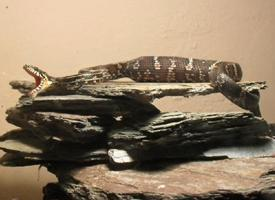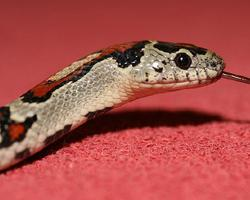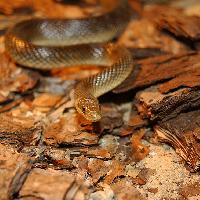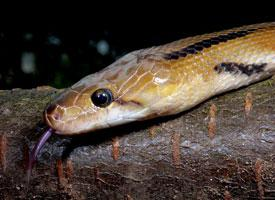
Weights and measures
| Length | from 150 to 170 cm |
|---|
Animal description
The Amur rat snake (Elaphe schrenckii), named after the Russian explorer Leopold von Schrenck who first described it, is a fascinating and relatively large species of colubrid snake native to a wide range of habitats across East Asia, including parts of Russia, China, Korea, and Japan. This species is distinguished by its adaptability to various environments, from forests and grasslands to the vicinities of water bodies, showcasing its remarkable versatility.Typically, an adult Amur rat snake can reach lengths of approximately 120 to 180 centimeters (4 to 6 feet), though some individuals have been known to grow even larger. The body of the snake is elongated and muscular, enabling it to move swiftly and efficiently both on the ground and in trees. Its scales are smooth and glossy, providing a sleek appearance that aids in reducing friction as it moves through its environment.
The coloration of the Amur rat snake is notably variable, often depending on its specific habitat, which aids in camouflage. Generally, its dorsal (back) side displays a base color ranging from dark brown to olive, adorned with a series of darker crossbands or blotches that may sometimes merge into a zigzag pattern. This patterning helps the snake blend into the forest floor or underbrush, making it less visible to predators and prey alike. The ventral (belly) side is usually lighter, featuring a creamy white or yellowish color, sometimes with scattered dark markings.
Amur rat snakes are diurnal, meaning they are primarily active during the day. Their diet mainly consists of small mammals such as rodents, making them beneficial for controlling pest populations. They are also known to consume birds and their eggs, along with occasional amphibians and other reptiles. These snakes employ constriction as their method of subduing prey, wrapping their muscular bodies around the victim and tightening their coils until the prey suffocates.
In terms of behavior, the Amur rat snake is generally considered non-aggressive and will often choose to flee rather than confront potential threats. However, if cornered or handled, it may resort to biting as a defensive measure. These snakes are also known for their swimming ability, often found near water where they can hunt for amphibians or escape predators.
Reproduction in Amur rat snakes is oviparous, with females laying clutches of 5 to 17 eggs in the early summer. The eggs are deposited in hidden locations such as under logs or in loose soil, where they incubate for approximately two months before hatching. The hatchlings are independent from birth and receive no parental care, starting their lives equipped with the instincts necessary for survival.
Conservation-wise, the Amur rat snake is currently not considered to be at significant risk, classified as Least Concern by the IUCN Red List. However, like many species, it faces threats from habitat destruction, pollution, and potentially from over-collection for the pet trade. Efforts to preserve its natural habitats and monitor populations are essential to ensure this unique species continues to thrive in its native range.
In summary, the Amur rat snake is a captivating species with a broad geographic range and an ability to adapt to various environments. Its role in controlling rodent populations makes it a valuable part of the ecosystem. With ongoing conservation efforts, this resilient and fascinating snake will hopefully remain a common sight across its natural habitats for generations to come.
Similar Animals
New photos of animals
Top 10 animals
- Dolphin gull (Leucophaeus scoresbii)
- Diana monkey (Cercopithecus diana)
- Moustached guenon (Cercopithecus cephus)
- Galápagos tortoise (Geochelone nigra complex)
- Japanese macaque (Macaca fuscata)
- Stone loach (Barbatula barbatula)
- Greek tortoise (Testudo graeca)
- Russian tortoise (Testudo horsfieldii)
- Common flying dragon (Draco volans)
- Galápagos penguin (Spheniscus mendiculus)


